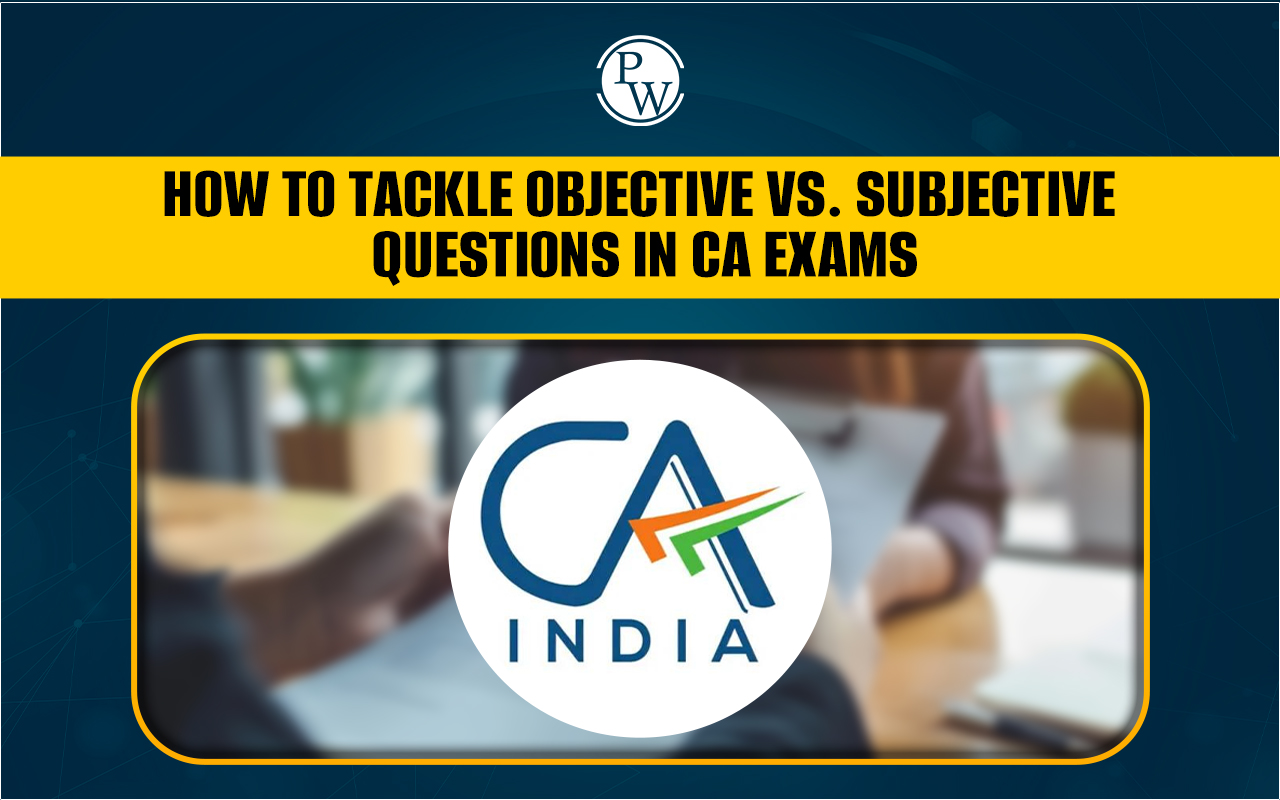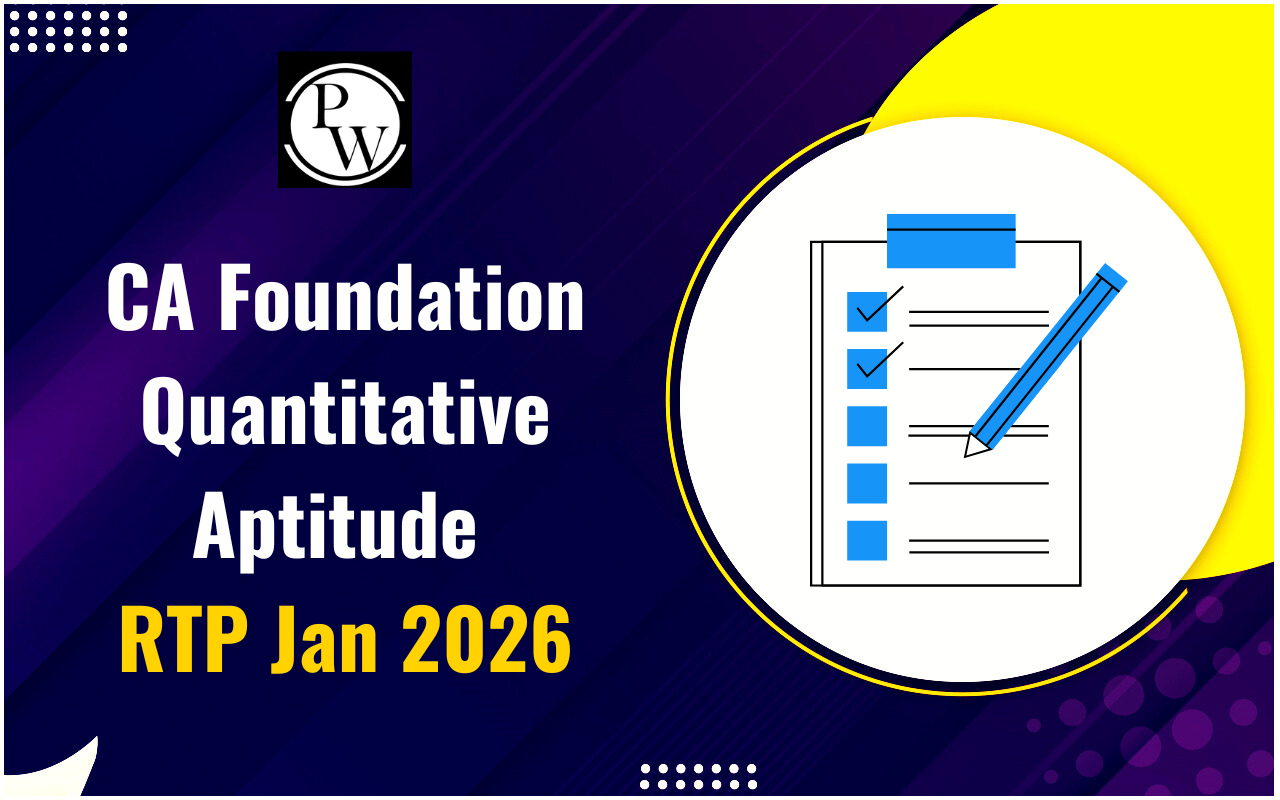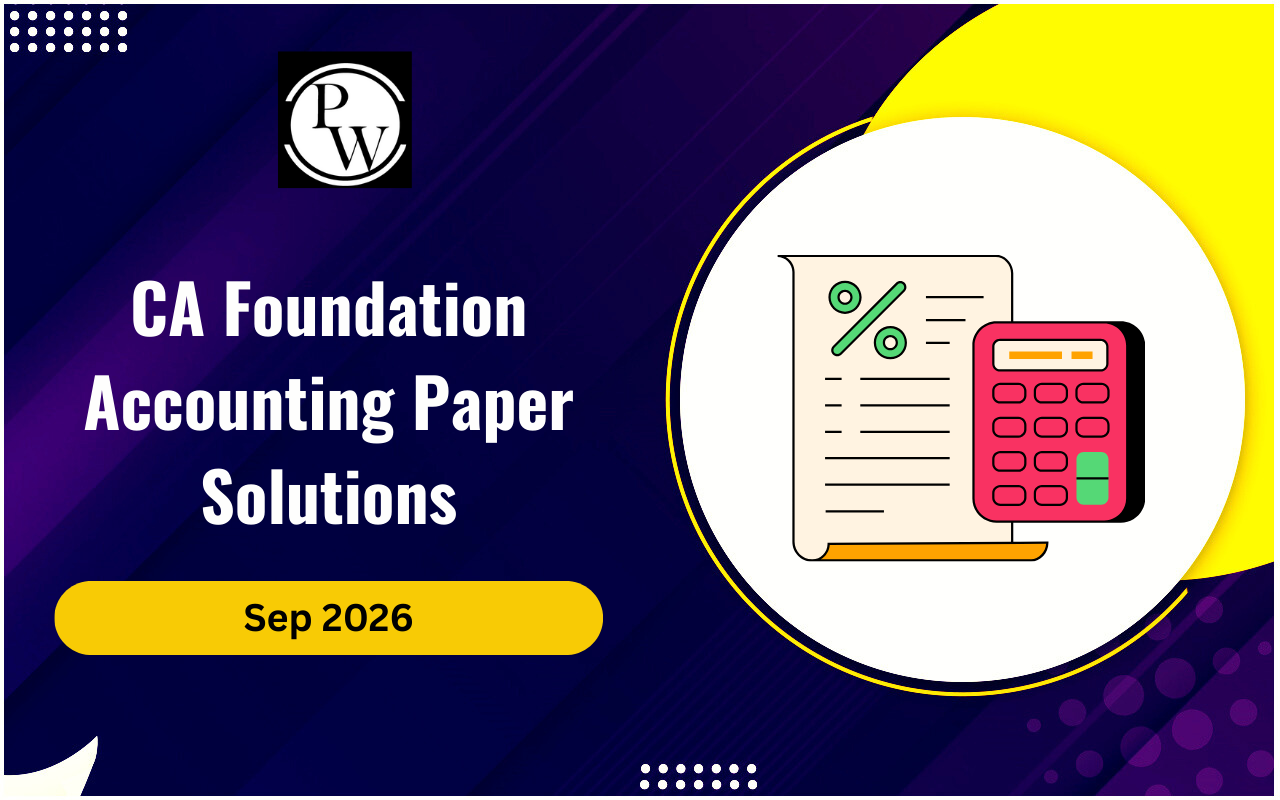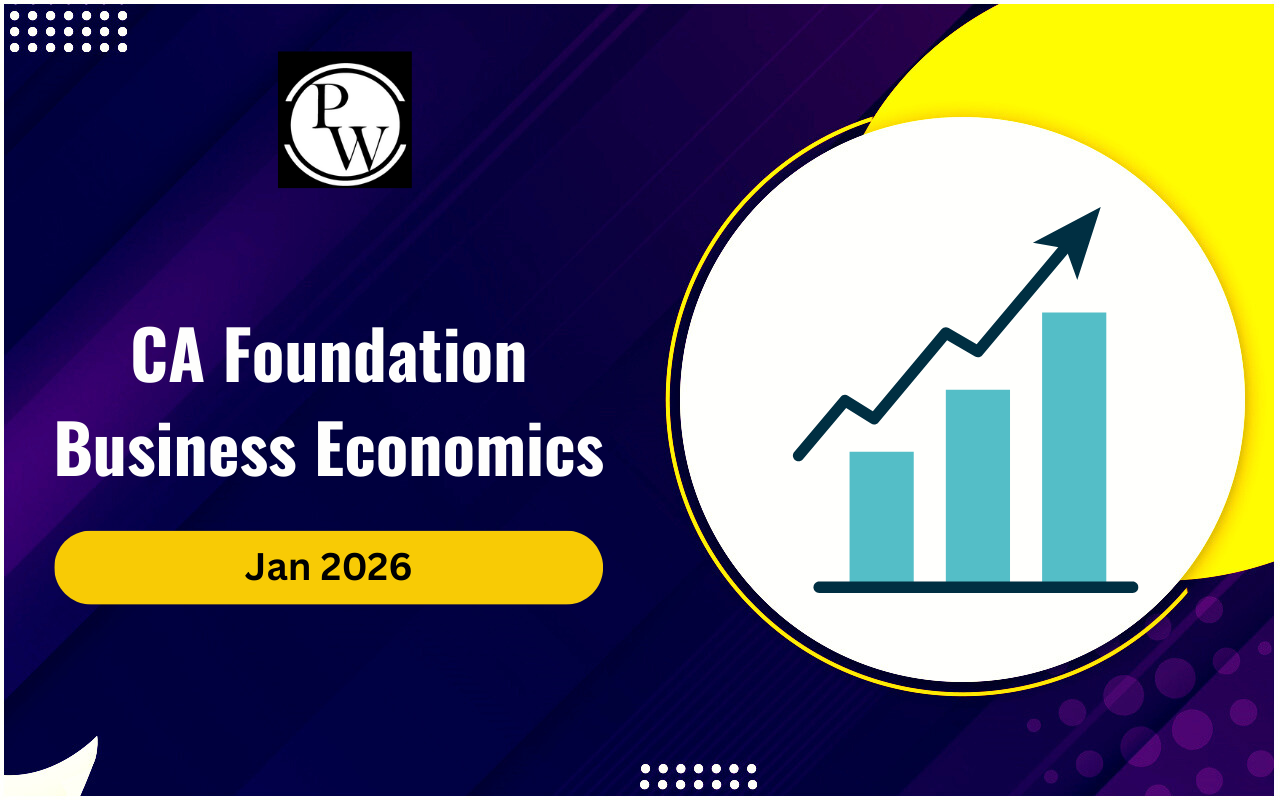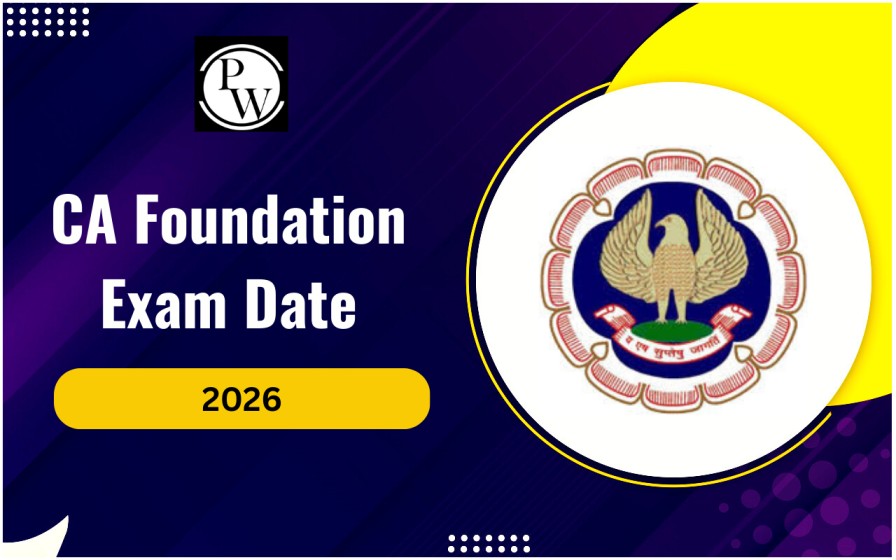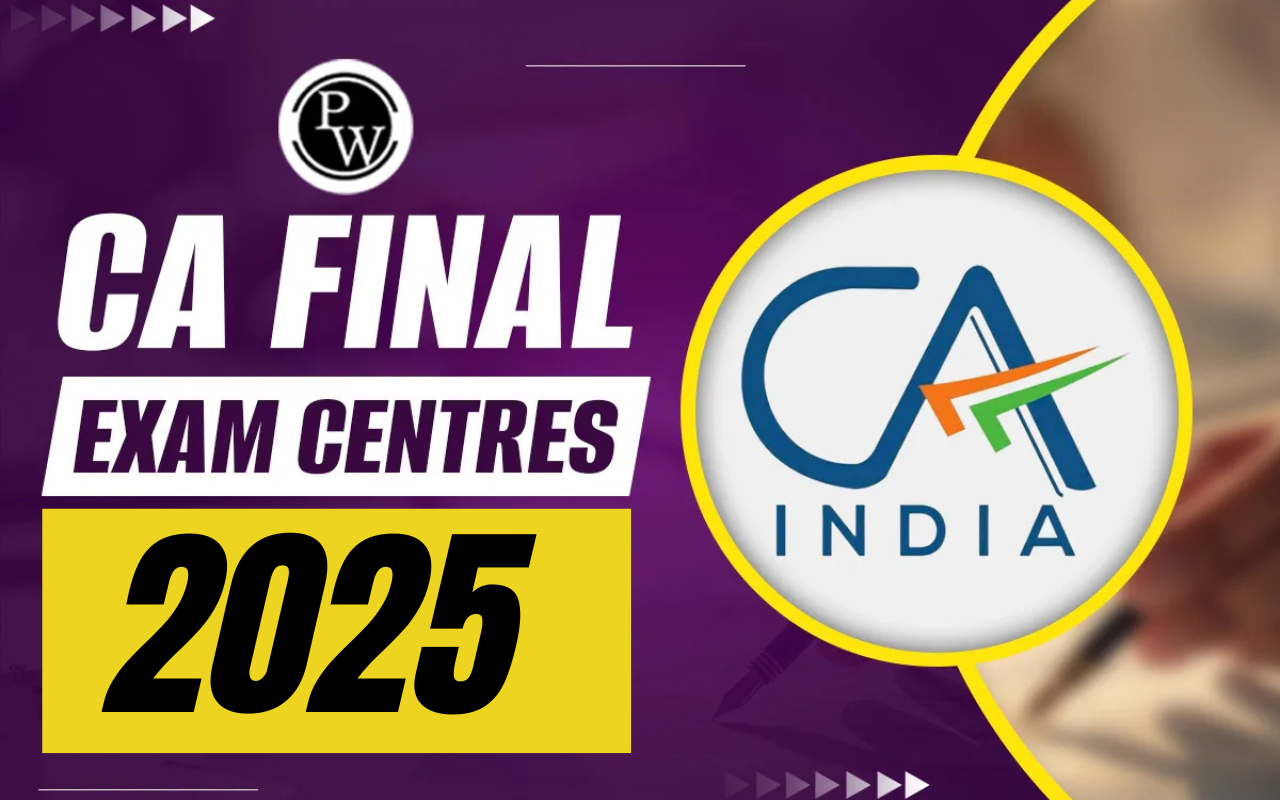
CA Foundation’s Quantitative Aptitude and Logical Reasoning section is a crucial part of Paper 3. This paper evaluates your ability to think critically, manage numbers, and solve problems effectively. If you’re gearing up for the CA Foundation, it’s essential to give this subject the attention it deserves. Let’s simplify everything you need to know about Quantitative Aptitude and Logical Reasoning.
What is Quantitative Aptitude and Logical Reasoning?
Quantitative Aptitude deals with problem-based mathematical calculations alongside the use of logic and formulas, where applicable. Within the scope of Logical Reasoning, one works with solving riddles and pattern recognition, which requires one to think critically, so as to arrive at a certain solution.
Both Quantitative Aptitude and Logical Reasoning examine and measure your cognitive functions, including mental agility and decision-making speed.
CA Foundation LR Quant Syllabus Breakdown
The CA Foundation LR Quant syllabus is divided into three parts
PART-A: BUSINESS MATHEMATICS
- Chapter 1: Ratio and Proportion, Indices, Logarithms
- Chapter 2: Equations
- Chapter 3: Linear Inequalities
- Chapter 4: Mathematics of Finance
- Chapter 5: Basic Concepts of Permutations and Combinations
- Chapter 6: Sequence and Series – Arithmetic and Geometric Progressions
- Chapter 7: Sets, Relations and Functions, Basics of Limits and Continuity functions
- Chapter 8: Basic Applications of Differential and Integral Calculus in Business and Economics
- (A) Differential Calculus
- (B) Integral Calculus
PART-B: LOGICAL REASONING
- Chapter 9: Number Series, Coding and Decoding and Odd Man Out
- Chapter 10: Direction Sense Tests
- Chapter 11: Seating Arrangements
- Chapter 12: Blood Relations
PART-C: STATISTICS
- Chapter 13
- Chapter 14: Measures of Central Tendency and Dispersion
-
-
Unit I: Measures of Central Tendency
-
Unit II: Dispersion
-
-
- Chapter 15: Probability
- Chapter 16: Theoretical Distributions
- Chapter 17: Correlation and Regression
- Chapter 18: Index Numbers
CA Foundation Quantitative Aptitude and Logical Reasoning Questions
To prepare well, it's helpful to understand the types of questions asked in CA Foundation examinations. Below, we’ve mentioned CA Foundation Quantitative Aptitude and Logical Reasoning Questions, Topic-wise for practice.
Number Series Questions
Q1: 6, 11, 21, 36, 56, ?
a) 43
b) 51
c) 81
d) 91
Ans: c) 81
Q2: 10, 100, 200, 310, ?
a) 400
b) 410
c) 420
d) 430
Ans: d) 430
Q3: 6,12,21,33, ?
a) 33
b) 38
c) 40
d) 48
Ans: d) 48
Q4: 2, 5, 9, 14, ?, 27
a) 20
b) 16
c) 18
d) 24
Ans: a) 20
Q5: 120, 99,?, 63, 48, 35
a) 80
b) 36
c) 45
d) 40
Ans: a) 80
Q6: 22,24,28,36,?,84
a) 44
b) 52
c) 38
d) 54
Ans b) 52
Q7: 4832, 5840, 6848, 7856, ?
a) 8864
b) 8815
c) 8846
d) 8887
Ans: a) 8864
Q8: 28, 33, 31, 36, 34, ?
a) 38
b) 39
c) 40
d) 42
Ans: b) 39
Coding-Decoding Questions
Q1: In a certain language, MADRAS is coded NBESBT, how DELHI is coded in that code?
a) EMMJI
b) EFMIJ
c) EMFIJ
d) JIFEM
Ans b) EFMIJ
Q2: If RAMAN is written as 12325 and DINESH as 675489 how HAMAM is written?
a) 92323
b) 92233
c) 93233
d) 93292
Ans a) 92323
Q3: If RED is coded as 6720 then GREEN would be coded as
a) 9207716
b) 167129
c) 1677209
d) 1672091
Ans c) 1677209
Q4: If GOLD is written as IQNF, how WIND can be written as code?
a) YKPF
b) VHCM
c) XJOE
d) DNIW
Ans a) YKPF
Q5: If ROSE is written as TQUG, how BISCUIT can be written in that code?
a) DKUEWKV
b) CJTDVJU
c) DKVEWKV
d) DKUEWKY
Ans a) DKUEWKV
Q6: If A=1, FAT=27, FAITH= ?
a) 44
b) 45
c) 46
d) 36
Ans a) 44
Q7: If BROTHER is coded 2456784, SISTER coded as 919684, what is coded for BORBERS?
a) 2542849
b) 2542898
c) 2454889
d) 2524889
Ans a) 2542849
Q8: If LOSE is coded as 1357 and GAIN is coded as 2468, what do figure 82146 stands for?
a) NGLAI
b) NGLIA
c) GNLIA
d) GNLIA
Ans a) NGLAI
ODD Man Out Questions
Q1: 3,5,7,15,17,19
a) 15
b) 17
c) 19
d) 7
Ans a) 15
Q2: 10,14,16,18,23,24,26
a) 26
b) 23
c) 24
d) 18
Ans b) 23
Q3: 1,4,9,16,24,25,36
a) 9
b) 24
c) 25
d) 37
Ans b) 24
Q4: 16, 25,36,73,144,196,225
a) 36
b) 73
c) 196
d) 225
Ans b) 73
Q5: 1,5,14,30,49,55,91
a) 49
b) 30
c) 55
d) 91
Ans a) 49
Q6: 4,5,7,10,14,18,25,32
a) 7
b) 18
c) 32
d) 14
Ans b) 18
Q7: 52,51,48,43,34,27,16
a) 27
b) 34
c) 43
d) 48
Ans b) 34
Direction Test Questions
Q1: Suresh starts from a point, walks 2 miles towards south, turns right and walks 1 ½ miles, turns left and walks ½ miles, and he turns back. What is the directions he is facing now?
a) East
b) North
c) West
d) South
Ans b) North
Q2: Arun started from point A and walked 10 kms East to point B, then turned to North and walked 3 kms to point C and then turned West and walked 12 kms to point D, then again turned south and walked 3 kms to point E. In which direction is he from his start point ?
a) East
b) North
c) West
d) South
Ans c) West
Q3: Laxman went 15 kms. To North then he turned West and covered 10 Kms. Then he turned South and covered 5 kms. Finally turning to East he covered 10kms. In which direction is he moving now?
a) East
b) North
c) West
d) South
Ans b) North
Q4: A man is facing East, then he left and goes to 10 meters then turns right and goes 5 metres to the South and from there 5 metres to West. In which direction is he from his original place?
a) North
b) South
c) East
d) West
Ans a) North
Q5: X walks southwards and then turns then left and right. In which directions is he moving now?
a) North
b) South
c) South West
d) West
Ans a) North
Seating Arrangement Questions
Q1: A,P,R,X,S, and Z are sitting in a row. S and Z are in the centre. A and O are at the ends. R is sitting to the left of A. Who is right of P?
a) A
b) X
c) S
d) Z
Ans b) X
Q2: Four Children’s are sitting in a row. A is occupying seat next to B but not next to C. If C is not sitting next to D, who is occupying the seat adjacent to D.
a) B
b) B and A
c) A
d) Can’t be determined
Ans c) A
Q3: 8 leaders P, Q, R, S, T, U, V and W are sitting on a bench facing towards North. T fourth to the left of P. S is fourth to the right of W. U and R are not sitting at the ends, but they are neighbours of T and Q, respectively. P is next to the right of W and but left of Q. Who are sitting at the extreme ends?
a) T and S
b) P and Q
c) U and R
d) None
Ans a) T and S
Q4: There are fives houses P, Q, R, S, and T. P is immediate right of Q and T is immediate left of R and immediate right of P. Q is right of S. Which house is middle
a) P
b) Q
c) R
d) T
Ans a) P
Q5: Six persons A, B, C, D, E and F are standing in a circle. B is between D and C, A is between E and C. F is to be right of D. Who is between A and F
a) B
b) C
c) D
d) E
Ans d) E
Blood Relations Questions
Q1: P is Q’s daughter, Q is R’s mother. S is R’s brother. How is S related to P?
a) Father
b) Grandfather
c) Brother
d) Son
Ans c) Brother
Q2: A is B’s brother. C is B’s mother. D is C’s father. E is D’s mother. How A is related to E
a) Grandmother
b) Granddaughter
c) Great Grandson
d) Grandson
Ans c) Great Grandson
Q3: A is B’s brother. C is D’s father. E is B’s mother. A and D are brothers. How is C related to E
a) Wife
b) Husband
c) Sister in law
d) Niece
Ans b) Husband
Q4: A prisoner introduced a boy who came to visit him to the jailor as “Brothers and sisters, I have none, he is my father’s son’s son”. Who is the boy
a) Nephew
b) Son
c) Cousin
d) Uncle
Ans b) Son
Q5: Suresh introduces a man as “he is the son of the woman who is the mother of the husband of my mother”. How is Suresh is related to the man?
a) Brother-in-law
b) Son
c) Brother
d) Nephew
Ans d) Nephew
Easy Tricks for CA Foundation Quantitative Aptitude and Logical Reasoning
Let’s understand some Quantitative Aptitude and Logical Reasoning CA Foundation tricks:
- Break Big Problems into small steps
- Use Shortcuts only when you’re sure
- Always Check Units (like km/hr or m/sec)
- Practice with a Timer to increase speed
- Revise Formulas daily
- Draw Diagrams for time-distance or work questions
- For Number Series, look for differences, squares, or cubes.
- In Coding-Decoding, find letter shifts (like +1 or -2).
- Use family tree diagrams in Blood Relation problems.
- In Direction Tests, imagine a compass. Use left-right and angles.
- For Seating Arrangements, always make a table or circle.
- In Odd Man Out, find what doesn’t fit the pattern.
These tricks help in mastering Quantitative Aptitude and Logical Reasoning for CA Foundation.
How to prepare for Quantitative Aptitude and Logical Reasoning
Begin with ICAI Material: It aligns with exam standards.
Review Previous Exam Papers: Observe the recurring questions.
Utilize Model Test Papers: Complete entire exams.
Don’t Merely Observe: Stop the videos and attempt to solve it on your own.
Stay Consistent: Regular practice is more important than lengthy hours.
Participate in Doubt Sessions: Inquire and resolve your uncertainties.
Adhere to this to develop robust Quantitative Aptitude and Logical Reasoning abilities
Quantitative aptitude and Logical Reasoning may additionally look hard, but they become easier with practice.
Simply be normal, targeted, and honest with yourself. Every solved query adds to your self-belief. Also, don't forget the CA foundation LR Quant syllabus is constant. If you persist with it and use the right techniques, you'll do nicely. Use smart techniques, be patient, and revise regularly. It's the way you win at Quantitative aptitude and Logical Reasoning.
Quantitative Aptitude and Logical Reasoning FAQs
What is the best way to prepare Logical Reasoning for CA Foundation?
How much time should I give to Quantitative Aptitude daily?
Are tricks useful for Quantitative Aptitude CA Foundation?
What is the CA Foundation Paper 3 weightage?


